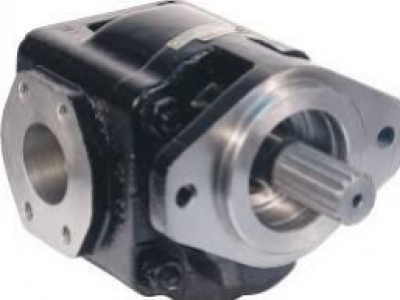Hydraulic pumps, open-loop and closed-loop circuits
Hydraulic pumps are devices changing mechanical power into hydraulic energy which in turn is used to perform work. Pumps have a really wide range of applications in various machines nowadays.
These useful devices can work in open or closed-loop circuits (systems) according to needs or circumstances.
Construction of pumps, principles of their operation, open-loop and closed-loop circuits are briefly presented below.
Construction and principles of operation of a pump
Each pump is built of the following fundamental parts:
● housing (outer casing)
● impeller with vanes
● power source
● shaft
● volute (inner casing, which contains an impeller and fluid)
All parts are made of tough materials as they have to stand both high inner pressure and influence of - very often unfavourable - environmental factors.
A power source, e.g. an electric motor, supplies energy and moves a shaft which rotates very quickly and drives an impeller (with vanes). The impeller moves hydraulic fluid (usually low-viscosity oil) and pumps it under high pressure to outlets and then to cylinders or motors. Finally, hydraulic cylinders or motors change hydraulic energy of fluid under pressure in linear motion or rotational motion, respectively.
Open-loop and closed-loop circuits
Hydraulic pumps can work in open-loop or closed-loop circuits (systems).
In closed-loop circuits, fluid flows directly between a pump and a cylinder or a motor (they are generally called ‘actuators’). There is no additional fluid reservoirs in such systems. A closed-loop circuit requires an additional pump, usually called a charge pump. Circuits of this type are more precise as well as easier to operate and maintain but they generate more heat.
In open-loop circuits, fluid from a cylinder or motor flows to an additional unpresserised reservoir and only then to a pump inlet. Open-loop systems generate less heat and better cool working cylinders or motors so enable longer work but they are less precise.
Using hydraulic pumps
As hydraulic pumps vary significantly in sizes and efficiency, they find a broad range of applications. They are applied in a vast number of size-varied building, mobile and industrial machines such as cranes, excavators and loaders, agricultural machines (e.g. tractors), dump lorries or rail cars, graders, mining machines and many others. It is really hard to imagine moulding machines, presses, forklifts, conveyors or mixers without hydraulic pumps. They can be found literally in all hydraulic systems.
Summary
Application of hydraulic pumps has lots of advantages. They enable smooth and very efficient work with relatively low energy consumption. Additionally, hydraulic pumps are both quite easy to operate and heavy-duty (provided that they are properly used and maintained) so it seems that a range of their applications will certainly increase.

